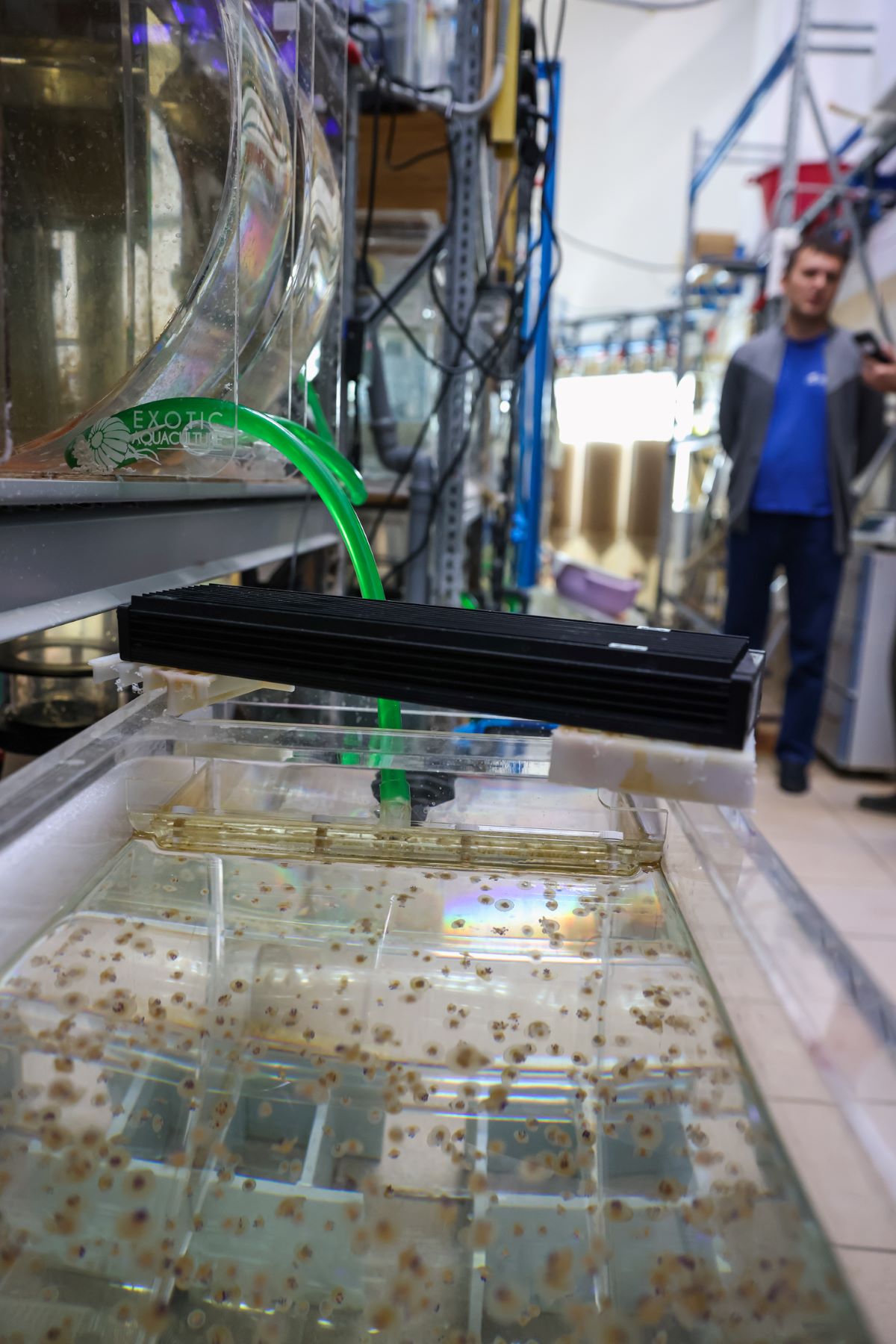Chum salmon Oncorhynchus keta, like all other salmons, is found only in the cold and rich in oxygen waters of the Northern Hemisphere. It is still unknown, how salmons have adapted to life in both the ocean and freshwater bodies. Scientists think that these fish first inhabited Arctic lakes and rivers. However, about a million years ago, when the Ice Age began and food resources declined, salmons had to migrate to the more nourishing oceanic pastures.
Why do they repeatedly return into the rivers if the ocean abounds in food? Statistically, a chum salmon grows by 1 cm each 10 days of active feeding in the ocean. Much shallower, rivers cannot produce as much food, but the offspring here is protected by a special adaptive mechanism. Females lay their eggs into the gravel, where they are safely hidden from even the hungriest predators. After juvenile salmon emerge from the gravel, they start their way downstream to the sea, usually swimming at nighttime to avoid their enemies.
Visitors to the Primorsky Aquarium can observe chum salmon at its different life stages, from fry to adults. The Rivers and Lakes Exhibit displays fry. As the small fish grow bigger and their bodies adapt to saltwater environment, they are transferred to the Russian Far East seas exhibits.
Anatolii Semenchenko, Prinicipal Specialist of the Department of Russian Far East Freshwater Species and one of the prominent experts in salmons in Russia, told us that Pacific salmons could be divided into two groups depending on the time they spend in fresh water. The first group includes pink and chum salmon. By the way, the fry of pink salmon head to the sea as soon as they emerge from the gravel, not even bothering to eat something in the river. On the other hand, the fry of the second group of species (sockeye, chinook, coho, and cherry salmons) spend from one to three in freshwater streams and rivers. Cherries even have living freshwater forms.
Once hatched, the fry of chum stay one to two months in the river and then migrate to the sea. This period is shorter in the small rivers of Khasan District in Primorsky Krai, lasting only one to two weeks, whereas in some North American populations it can be as long as four months.
Salmon become silvery at sea, where they spend three to six years and perform long-distance migrations, for example, from Alaska to Kamchatka, feeding on small fish (herring, smelt and sand lance), mollusks (squid), and crustaceans. Chum are substantial fish that can grow up to 100 cm and 15 kg. When the spawning period comes, they change color and become olive green, with vertical purple or red stripes on the sides. And there it comes, the culmination of the life cycle: the spawning urge makes chum travel from the ocean to their natal rivers, which they find unerringly following their homing instinct. Homing is the ability to find the way home from a long distance away. In search of this destination, chum use the positions of the sun and stars, the Earth’s magnetic field and, first of all, a keen sense of smell. Salmon can detect the odors of their home stream measured in parts per billion. Each year their schools migrate hundreds of kilometers upstream. Once they reach freshwater, they stop feeding all the way to the spawning ground.
Unlike their Atlantic relatives, which can return to the ocean and go over the second or more reproductive cycles, rapid aging and death after spawning are predetermined in the Pacific salmons.
Their fate is tragic: after they have fertilized the eggs laid by the females, worn-out males helplessly drift downstream to be caught by predators or to end up washed ashore within a few days. Females guard the nests for a week or two after spawning and eventually die, too. This is the end of their life cycle, sometimes happening just a few meters from their birthplace.





.jpg)